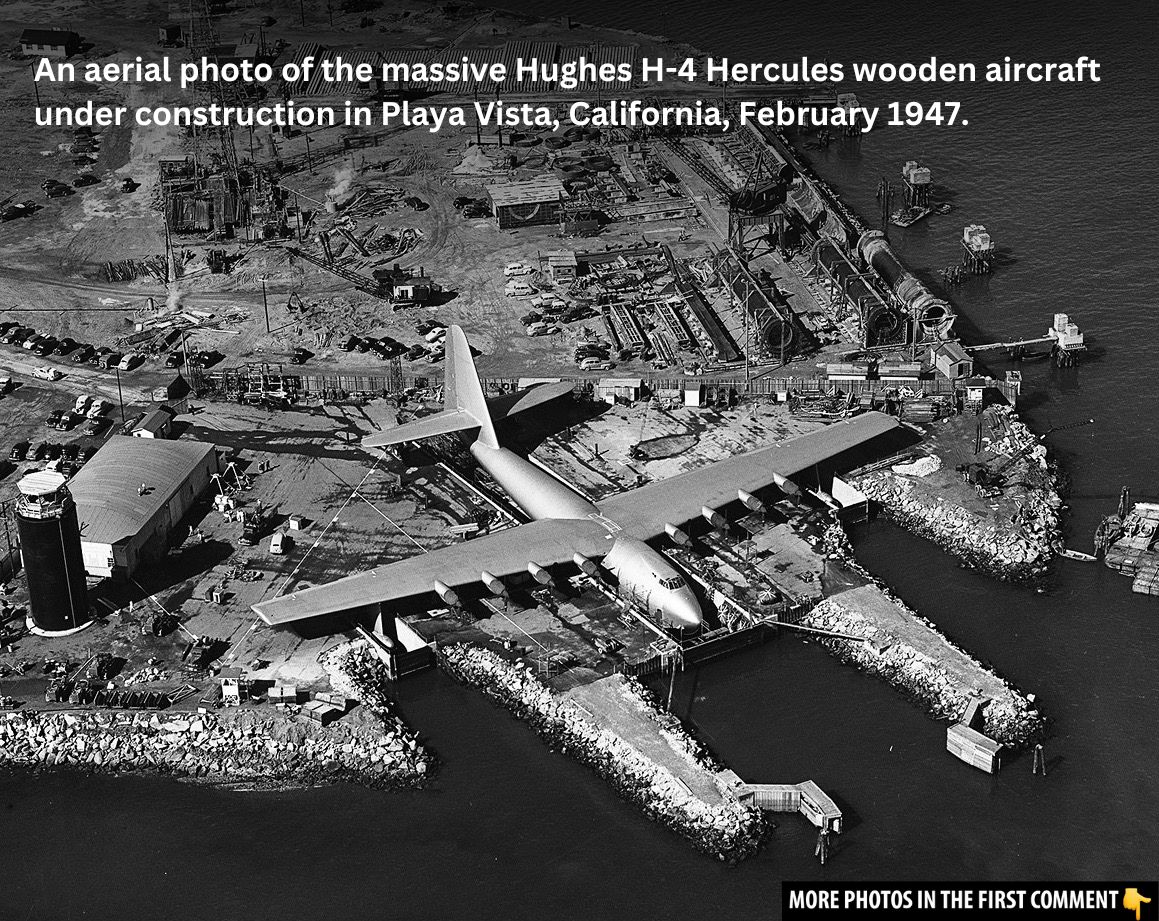The Hughes H-4 Hercules, often called the “Spruce Goose,” is a testament to one of the most ambitious aviation projects ever undertaken. Conceived during a time when the world was at war and innovation was at a critical juncture, this massive aircraft became the symbol of human perseverance, engineering ingenuity, and sheer determination. Built primarily of wood due to wartime material restrictions, the H-4’s legacy lives on as a symbol of both failure and awe-inspiring achievement. Let’s take a deep dive into the story of this mammoth flying boat, which made its mark in history both on the ground and in the skies.
Origins of the Hughes H-4 Hercules
The origins of the H-4 Hercules can be traced back to World War II, a time when German submarines posed a significant threat to Allied shipping. At that time, steel magnate Henry Kaiser had the vision of creating a massive flying transport to help move soldiers and supplies across the Atlantic. Faced with the logistical nightmare of frequent shipping losses, he turned to Howard Hughes to bring his vision to life. Hughes, a man known for his perfectionism and ambitious nature, took on the challenge of creating what was to become the largest aircraft the world had ever seen.
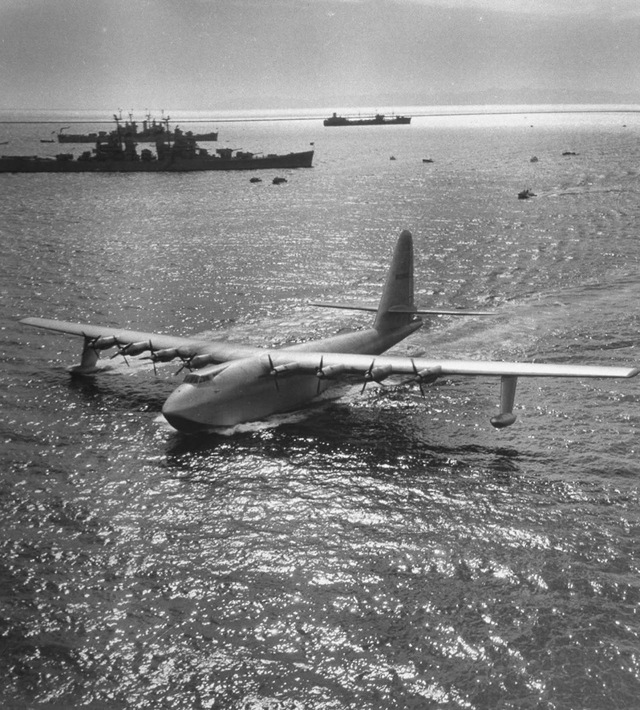
Video
Watch this video to see the Hughes H-4 Hercules take flight in 1947, now in stunning 4K up-scaled quality!
The Challenges of Building the Giant Aircraft
As with any major endeavor during wartime, Hughes faced several hurdles. The U.S. government had imposed strict regulations on the use of aluminum and steel for military purposes. This led to the decision to construct the H-4 primarily from wood. Initially, the aircraft was referred to as the HK-1, symbolizing the partnership between Hughes and Kaiser. However, as the project faced delays and financial difficulties, Kaiser withdrew in 1944, leaving Hughes to continue the massive undertaking on his own.
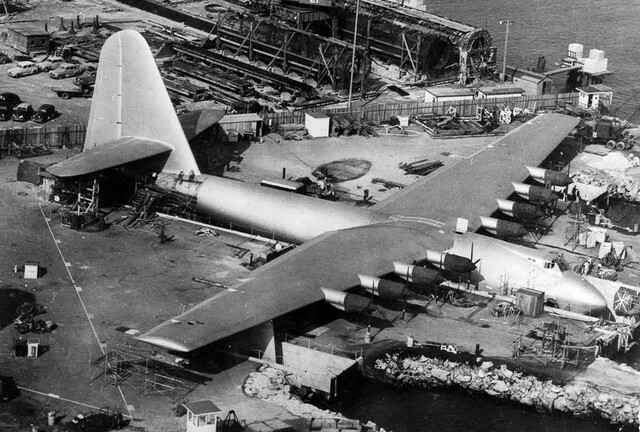
The construction process was slow and arduous, with many workers involved in creating the aircraft’s frame, wings, and other components. Hughes’ notorious perfectionism meant that the H-4 would be built to his exacting standards, leading to numerous modifications and refinements that contributed to the project’s extensive delays. By the time it was nearing completion, World War II had ended, and the strategic need for such a colossal aircraft had diminished.
The Design and Features of the H-4 Hercules
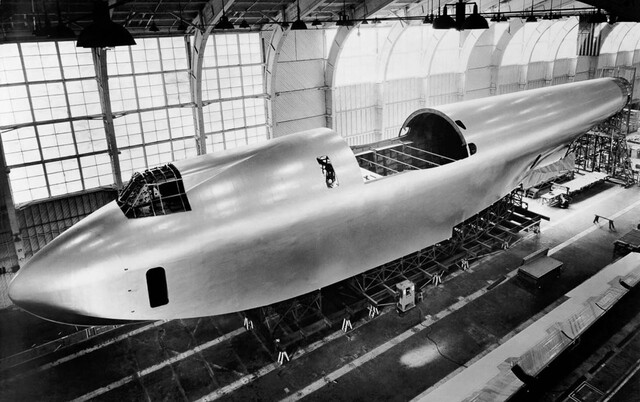
The H-4 Hercules was a true marvel of its time. With a wingspan of 320 feet, it was six times larger than any other aircraft built before it. The airplane was designed to carry up to 750 troops or two 30-ton Sherman tanks, along with 150,000 pounds of cargo. Despite its massive size, the plane was built with a single hull, eight radial engines, and a fixed wingtip float for stabilization.
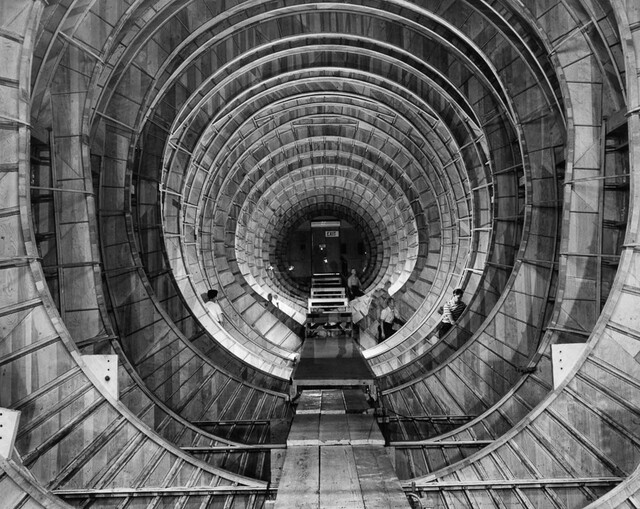
One of the key innovations was the use of laminated wood in the construction of the aircraft’s frame and wings. The use of wood was a necessity during the war due to metal shortages, but it also gave the plane its distinctive appearance. All of the primary control surfaces, except for the flaps, were covered with fabric. This wooden behemoth was a unique combination of technological advancement and wartime necessity.
The Controversial “Spruce Goose” Nickname
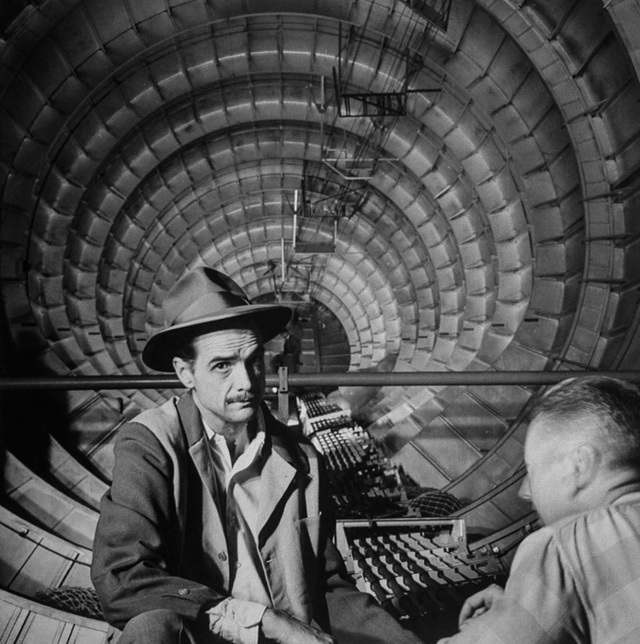
The H-4 Hercules, despite its groundbreaking design and capabilities, was unfortunately given the nickname “Spruce Goose” by the press. The name was a source of frustration for Hughes, who felt that it undermined the enormous effort that went into the creation of the aircraft. While it’s true that the plane was constructed primarily from wood, it was actually made from birch, not spruce, making the nickname even more inaccurate. Hughes went to great lengths to try and change public perception, but the name stuck. To this day, the “Spruce Goose” remains a well-known, albeit misinformed, term associated with this historic aircraft.
The First and Only Flight: November 2, 1947
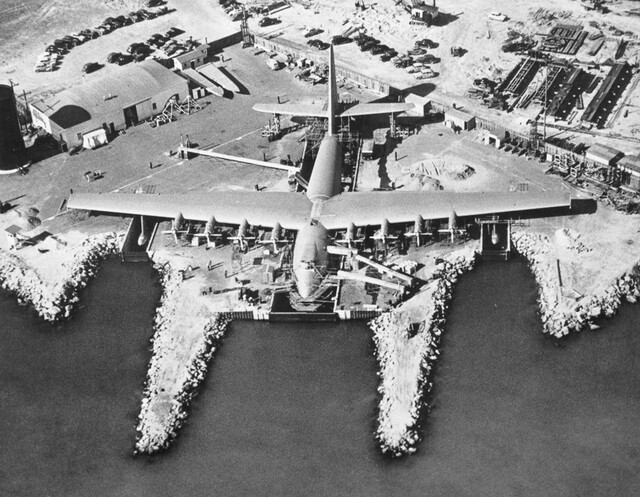
After years of construction and preparation, the H-4 Hercules took to the skies for the first and only time on November 2, 1947. Hughes, along with co-pilot David Grant, several engineers, and journalists, was aboard the plane during this momentous occasion. The flight, although short, proved that the massive aircraft was indeed capable of flight. The plane flew just over a mile at an altitude of 70 feet, reaching a speed of 80 mph. Although the flight was brief, it was enough to silence the critics who had doubted the possibility of such a giant aircraft ever leaving the ground.
Despite the successful flight, Hughes never got the opportunity to fly the H-4 again. The plane was relegated to a climate-controlled hangar, where it remained for decades. Hughes, ever the dreamer, hoped to one day take the aircraft on a second flight, but it was never to be. Even in its brief time in the sky, the H-4 proved to be a triumph of human engineering.
Post-Flight and Hughes’ Dream for a Second Flight
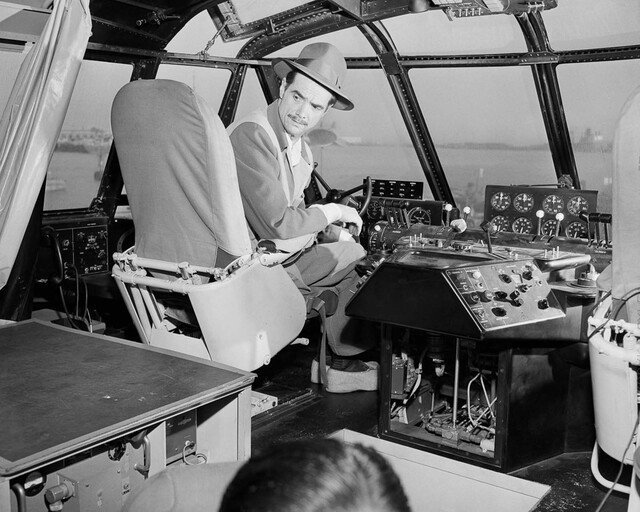
After the successful but short-lived flight, Hughes kept the H-4 Hercules in storage, maintaining it with a full crew. He continued to dream of taking the aircraft back into the sky for a second, longer flight. Sadly, Hughes passed away in 1976, and his dream of further flights with the Hercules never materialized. The plane, once a symbol of his bold ambition, remained out of the public eye for over 30 years.
The Plane’s Journey After Hughes’ Death
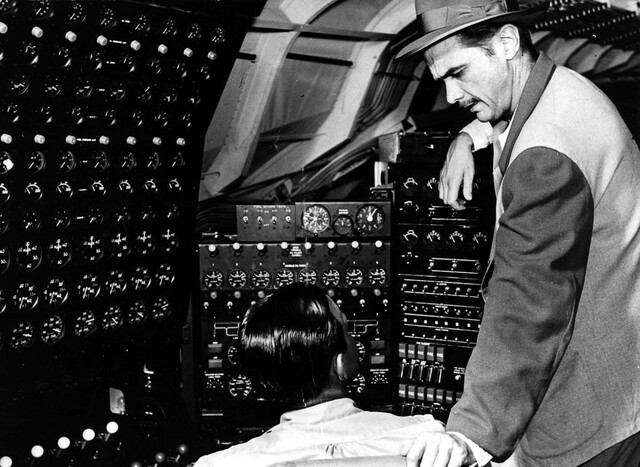
Following Hughes’ death, the H-4 Hercules changed hands several times. The plane was first gifted to the Aero Club of Southern California by Hughes’ Summa Corporation. It was later leased to the Wrather Corporation and moved to Long Beach, California, where it remained largely hidden from the public. In 1988, Disney acquired the location, but plans for the site did not include the Hercules.
In 1993, the plane was sold to the Evergreen Aviation Museum and moved to its current location in McMinnville, Oregon. The plane was disassembled and transported by barge to its new home, where it was reassembled and placed on display for future generations to admire. Today, the H-4 Hercules stands as a tribute to one of the most ambitious aviation projects in history.
Gallery: Vintage Photos of the H-4 Hercules in Action
The gallery section would include images of the construction process, the first flight, and other significant moments in the history of the H-4 Hercules. These photos serve as a powerful reminder of the vision, determination, and innovation that went into creating this massive flying machine.
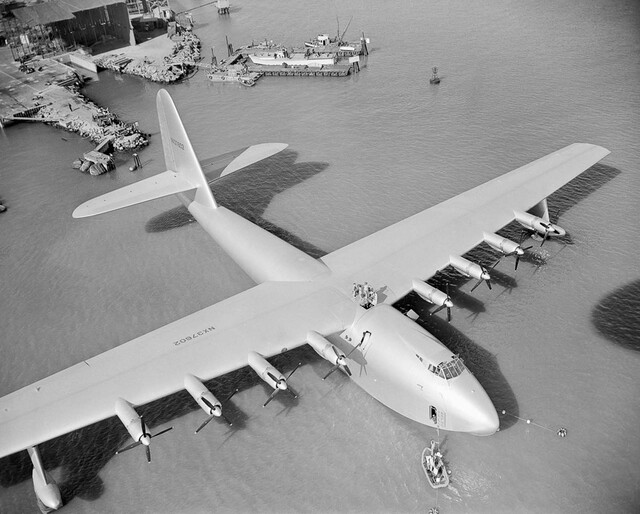

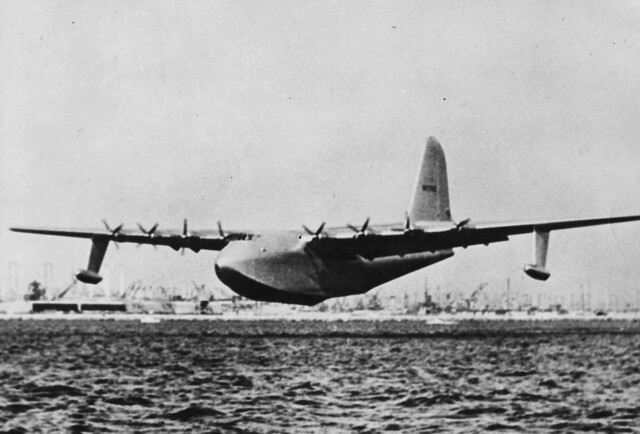
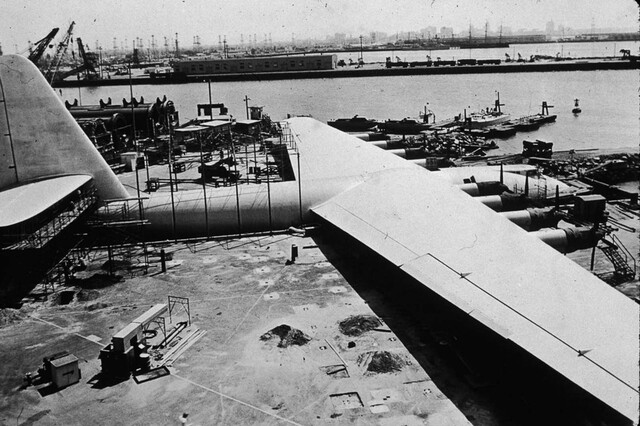
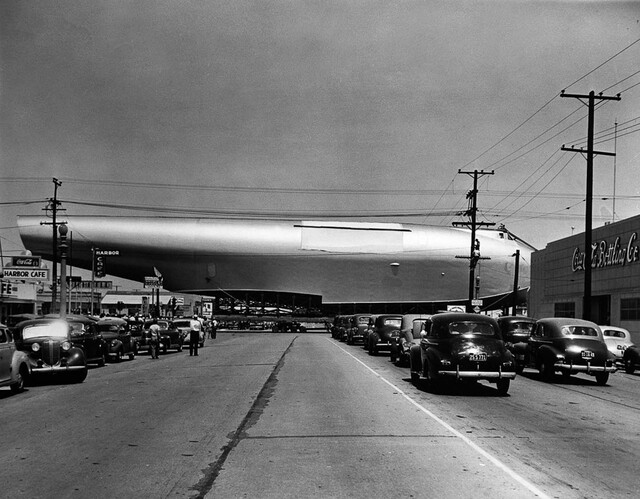
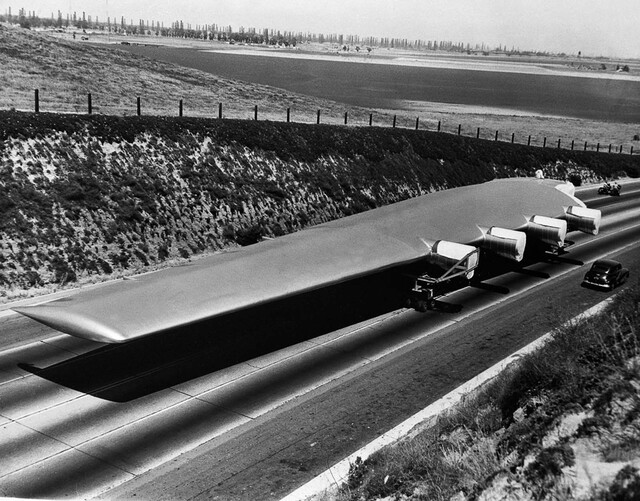
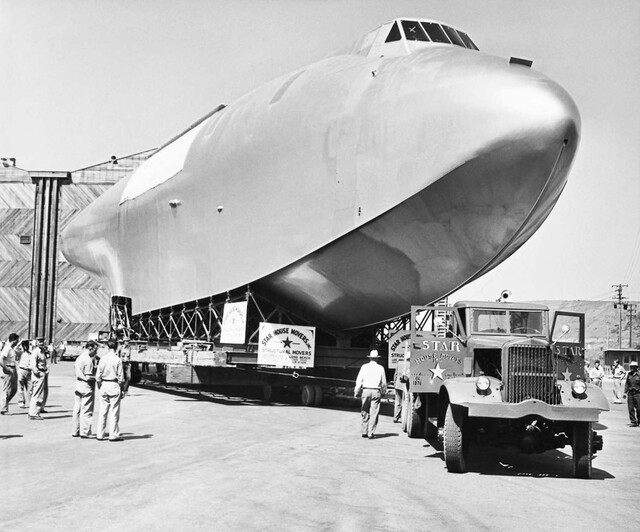

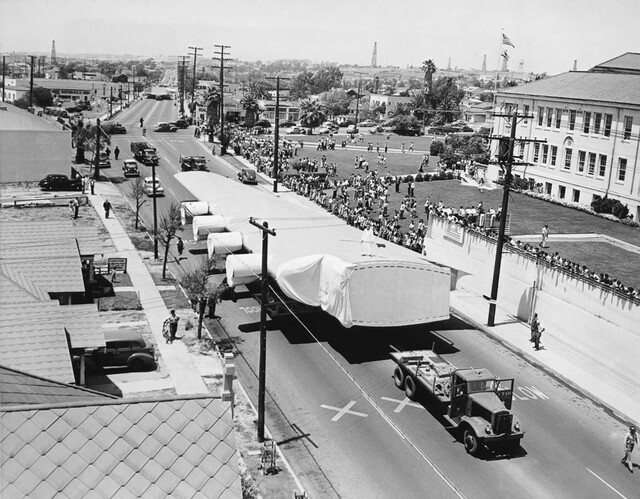
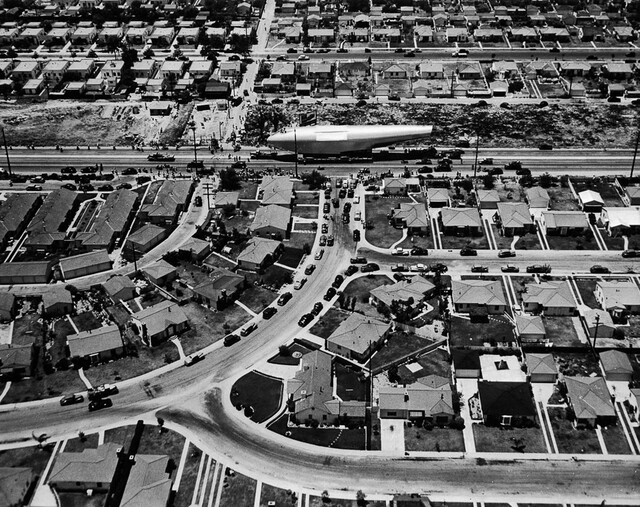
Conclusion: The Historical Significance of the H-4 Hercules
The H-4 Hercules may have flown only once, but its impact on aviation history is undeniable. The aircraft represented the pinnacle of human ambition and innovation during a time of global conflict. Although it was ultimately rendered obsolete by the end of the war, the H-4 stands as a testament to the ingenuity and determination that defined an era. Today, it serves as a lasting symbol of human creativity and the spirit of exploration that continues to inspire future generations of engineers and dreamers alike.
Video
Watch this video for a detailed tour of the Hughes H-4 Hercules, also known as the Spruce Goose!
